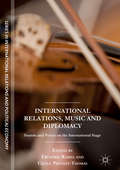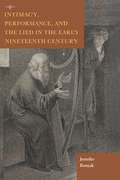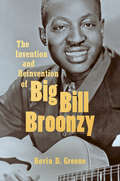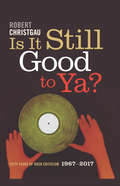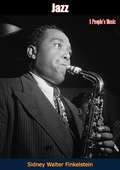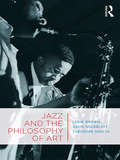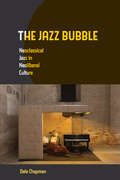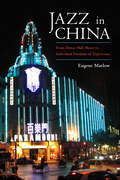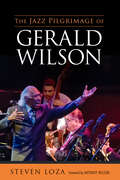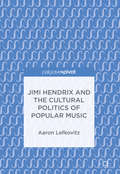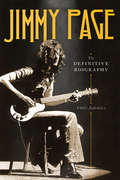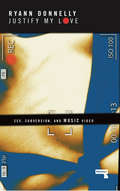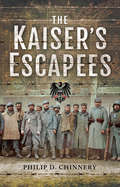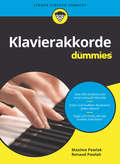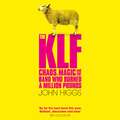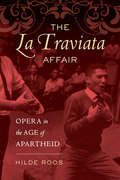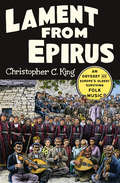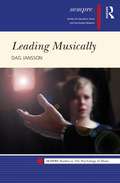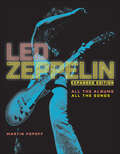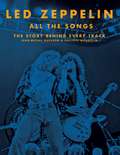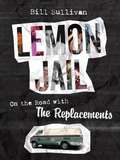- Table View
- List View
International Relations, Music and Diplomacy
by Frédéric Ramel Cécile Prévost-ThomasThis volume explores the interrelation of international relations, music, and diplomacy from a multidisciplinary perspective. Throughout history, diplomats have gathered for musical events, and musicians have served as national representatives. Whatever political unit is under consideration (city-states, empires, nation-states), music has proven to be a component of diplomacy, its ceremonies, and its strategies. Following the recent acoustic turn in IR theory, the authors explore the notion of “musical diplomacies” and ask whether and how it differs from other types of cultural diplomacy. Accordingly, sounds and voices are dealt with in acoustic terms but are not restricted to music per se, also taking into consideration the voices (speech) of musicians in the international arena.Read an interview with the editors here: https://www.sciencespo.fr/ceri/en/content/international-relations-music-and-diplomacy-sounds-and-voices-international-stage
Intimacy, Performance, and the Lied in the Early Nineteenth Century (Historical Performance)
by Jennifer RonyakThe German lied, or art song, is considered one of the most intimate of all musical genres—often focused on the poetic speaker’s inner world and best suited for private and semi-private performance in the home or salon. Yet, problematically, any sense of inwardness in lieder depends on outward expression through performance. With this paradox at its heart, Intimacy, Performance, and the Lied in the Early Nineteenth Century explores the relationships between early nineteenth-century theories of the inward self, the performance practices surrounding inward lyric poetry and song, and the larger conventions determining the place of intimate poetry and song in the public concert hall. Jennifer Ronyak studies the cultural practices surrounding lieder performances in northern and central Germany in the first quarter of the nineteenth century, demonstrating how presentations of lieder during the formative years of the genre put pressure on their sense of interiority. She examines how musicians responded to public concern that outward expression would leave the interiority of the poet, the song, or the performer unguarded and susceptible to danger. Through this rich performative paradox Ronyak reveals how a song maintains its powerful intimacy even during its inherently public performance.
The Invention and Reinvention of Big Bill Broonzy
by Kevin D. GreeneOver the course of his long career, legendary bluesman William "Big Bill" Broonzy (1893–1958) helped shape the trajectory of the genre, from its roots in the rural Mississippi River Delta, through its rise as a popular genre in the North, to its eventual international acclaim. Along the way, Broonzy adopted an evolving personal and professional identity, tailoring his self-presentation to the demands of the place and time. His remarkable professional fluidity mirrored the range of expectations from his audiences, whose ideas about race, national belonging, identity, and the blues were refracted through Broonzy as if through a prism. Kevin D. Greene argues that Broonzy's popular success testifies to his ability to navigate the cultural expectations of his different audiences. However, this constant reinvention came at a personal and professional cost. Using Broonzy's multifaceted career, Greene situates blues performance at the center of understanding African American self-presentation and racial identity in the first half of the twentieth century. Through Broonzy's life and times, Greene assesses major themes and events in African American history, including the Great Migration, urbanization, and black expatriate encounters with European culture consumers. Drawing on a range of historical source materials as well as oral histories and personal archives held by Broonzy's son, Greene perceptively interrogates how notions of race, gender, and audience reception continue to shape concepts of folk culture and musical authenticity.
Is It Still Good to Ya?: Fifty Years of Rock Criticism, 1967-2017
by Robert ChristgauIs It Still Good to Ya? sums up the career of longtime Village Voice stalwart Robert Christgau, who for half a century has been America's most widely respected rock critic, honoring a music he argues is only more enduring because it's sometimes simple or silly. While compiling historical overviews going back to Dionysus and the gramophone along with artist analyses that range from Louis Armstrong to M.I.A., this definitive collection also explores pop's African roots, response to 9/11, and evolution from the teen music of the '50s to an art form compelled to confront mortality as its heroes pass on. A final section combines searching obituaries of David Bowie, Prince, and Leonard Cohen with awed farewells to Bob Marley and Ornette Coleman.
Jazz: A People’s Music
by Sidney Walter FinkelsteinTHE PLACE OF JAZZ IN WORLD MUSIC…ITS HISTORY FROM NEW ORLEANS TO THE PRESENT DAY…ITS BEAUTY AS MUSIC…AND THE GREATNESS OF THE PEOPLE WHO MADE IT…This is a book for everyone who loves music—classical or jazz; for the one who performs or the one who makes up his audience. To either one it will contribute much for a better understanding and appreciation of this greatest and most widely participated in art.Everyone knows about jazz. We listen to it, we sing it, play it and dance to it. Yet it is the great unknown music.Jazz, A People’s Music describes all the developments of jazz from the early blues to present-day “bebop.” And just as the study of a composer’s music must include the man himself, here is an account of the growth of jazz as well as the study of all the American people, of every nationality and color, who have nurtured and welcomed this music and brought new and exciting variations of it into being.
Jazz and the Philosophy of Art
by Lee B. Brown David Goldblatt Theodore GracykCo-authored by three prominent philosophers of art, Jazz and the Philosophy of Art is the first book in English to be exclusively devoted to philosophical issues in jazz. It covers such diverse topics as minstrelsy, bebop, Voodoo, social and tap dancing, parades, phonography, musical forgeries, and jazz singing, as well as Goodman’s allographic/autographic distinction, Adorno’s critique of popular music, and what improvisation is and is not. The book is organized into three parts. Drawing on innovative strategies adopted to address challenges that arise for the project of defining art, Part I shows how historical definitions of art provide a blueprint for a historical definition of jazz. Part II extends the book’s commitment to social-historical contextualism by exploring distinctive ways that jazz has shaped, and been shaped by, American culture. It uses the lens of jazz vocals to provide perspective on racial issues previously unaddressed in the work. It then examines the broader premise that jazz was a socially progressive force in American popular culture. Part III concentrates on a topic that has entered into the arguments of each of the previous chapters: what is jazz improvisation? It outlines a pluralistic framework in which distinctive performance intentions distinguish distinctive kinds of jazz improvisation. This book is a comprehensive and valuable resource for any reader interested in the intersections between jazz and philosophy.
The Jazz Bubble: Neoclassical Jazz In Neoliberal Culture
by Dale ChapmanHailed by corporate, philanthropic, and governmental organizations as a metaphor for democratic interaction and business dynamics, contemporary jazz culture has a story to tell about the relationship between political economy and social practice in the era of neoliberal capitalism. The Jazz Bubble approaches the emergence of the neoclassical jazz aesthetic since the 1980s as a powerful, if unexpected, point of departure for a wide-ranging investigation of important social trends during this period, extending from the effects of financialization in the music industry to the structural upheaval created by urban redevelopment in major American cities. Dale Chapman draws from political and critical theory, oral history, and the public and trade press, making this a persuasive and compelling work for scholars across music, industry, and cultural studies.
Jazz in China: From Dance Hall Music to Individual Freedom of Expression
by Eugene MarlowFinalist for the 2019 Jazz Journalists Association Book of the Year About Jazz, Jazz Awards for Journalism"Is there jazz in China?" This is the question that sent author Eugene Marlow on his quest to uncover the history of jazz in China. Marlow traces China's introduction to jazz in the early 1920s, its interruption by Chinese leadership under Mao in 1949, and its rejuvenation in the early 1980s with the start of China's opening to the world under Premier Deng Xiaoping.Covering a span of almost one hundred years, Marlow focuses on a variety of subjects--the musicians who initiated jazz performances in China, the means by which jazz was incorporated into Chinese culture, and the musicians and venues that now present jazz performances.Featuring unique, face-to-face interviews with leading indigenous jazz musicians in Beijing and Shanghai, plus interviews with club owners, promoters, expatriates, and even diplomats, Marlow marks the evolution of jazz in China as it parallels China's social, economic, and political evolution through the twentieth and into the twenty-first century. Also featured is an interview with one of the extant members of the Jimmy King Big Band of the 1940s, one of the first major all-Chinese jazz big bands in Shanghai.Ultimately, Jazz in China: From Dance Hall Music to Individual Freedom of Expression is a cultural history that reveals the inexorable evolution of a democratic form of music in a Communist state.
The Jazz Pilgrimage of Gerald Wilson (American Made Music Series)
by Steven LozaJazz great Gerald Wilson (1918-2014), born in Shelby, Mississippi, left a global legacy of paramount significance through his progressive musical ideas and his orchestra's consistent influence on international jazz. Aided greatly by interviews that bring Wilson's voice to the story, Steven Loza presents a perspective on what the musician and composer called his "jazz pilgrimage."Wilson uniquely adapted Latin influences into his jazz palette, incorporating many Cuban and Brazilian inflections as well as those of Mexican and Spanish styling. Throughout the book, Loza refers to Wilson's compositions and arrangements, including their historical contexts and motivations. Loza provides savvy musical readings and analysis of the repertoire. He concludes by reflecting upon Wilson's ideas on the place of jazz culture in America, its place in society and politics, its origins, and its future.With a foreword written by Wilson's son, Anthony, and such sources as essays, record notes, interviews, and Wilson's own reflections, the biography represents the artist's ideas with all their philosophical, historical, and cultural dimensions. Beyond merely documenting Wilson's many awards and recognitions, this book ushers readers into the heart and soul of a jazz creator. Wilson emerges a unique and proud African American artist whose tunes became a mosaic of the world.
Jimi Hendrix and the Cultural Politics of Popular Music
by Aaron LefkovitzThis book, on Jimi Hendrix’s life, times, visual-cultural prominence, and popular music, with a particular emphasis on Hendrix’s relationships to the cultural politics of race, gender, sexuality, ethnicity, class, and nation. Hendrix, an itinerant “Gypsy” and “Voodoo child” whose racialized “freak” visual image continues to internationally circulate, exploited the exoticism of his race, gender, and sexuality and Gypsy and Voodoo transnational political cultures and religion. Aaron E. Lefkovitz argues that Hendrix can be located in a legacy of black-transnational popular musicians, from Chuck Berry to the hip hop duo Outkast, confirming while subverting established white supremacist and hetero-normative codes and conventions. Focusing on Hendrix’s transnational biography and centrality to US and international visual cultural and popular music histories, this book links Hendrix to traditions of blackface minstrelsy, international freak show spectacles, black popular music’s global circulation, and visual-cultural racial, gender, and sexual stereotypes, while noting Hendrix’s place in 1960s countercultural, US-exceptionalist, cultural Cold War, and rock histories.
Jimmy Page: The Definitive Biography
by Chris SalewiczAn in-depth biography of Led Zeppelin guitarist Jimmy Page by the acclaimed biographer of Bob Marley and Joe Strummer, based upon the author's extensive research and interviewsThe original enigmatic rock star, Jimmy Page is a mass of contradictions. A towering presence in the guitar world and one of the most revered rock guitarists of all time, in private he is reclusive and mysterious, retiring and given to esoteric interests. Over the decades he has exchanged few words to the press given the level of his fame, and an abiding interest in the demonic and supernatural has only made the myth more potent.But in the midst of this maelstrom, who was Jimmy Page? Rock journalist Chris Salewicz has conducted numerous interviews with Page over the years and has created the first portrait of the guitarist that can be called definitive, penetrating the shadows that surround him to reveal the fascinating man who dwells within the rock legend.
John Cage: A Research and Information Guide (Routledge Music Bibliographies)
by Sara HaefeliThis annotated bibliography uncovers the wealth of resources available on the life and music of John Cage, one of the most influential and fascinating composers of the twentieth-century. The guide will focus on documentary studies, archival resources, scholarly research, and autobiographical materials, and place the composer and his work in a larger context of postmodern philosophy, art and theater movements, and contemporary politics. It will support emerging scholarship and inquiry for future research on Cage, with carefully selected sources and useful annotations.
Just a Shot Away: Peace, Love, and Tragedy with the Rolling Stones at Altamont
by Saul Austerlitz“The most blisteringly impassioned music book of the season.” —New York Times Book ReviewAn Amazon Best of the Month BookA thrilling account of the Altamont Festival—and the dark side of the ‘60s.If Woodstock tied the ideals of the '60s together, Altamont unraveled them. In Just a Shot Away, writer and critic Saul Austerlitz tells the story of “Woodstock West,” where the Rolling Stones hoped to end their 1969 American tour triumphantly with the help of the Grateful Dead, the Jefferson Airplane, and 300,000 fans. Instead the concert featured a harrowing series of disasters, starting with the concert’s haphazard planning. The bad acid kicked in early. The Hells Angels, hired to handle security, began to prey on the concertgoers. And not long after the Rolling Stones went on, an 18-year-old African-American named Meredith Hunter was stabbed by the Angels in front of the stage.The show, and the Woodstock high, were over. Austerlitz shows how Hunter’s death came to symbolize the end of an era while the trial of his accused murderer epitomized the racial tensions that still underlie America. He also finds a silver lining in the concert in how Rolling Stone’s coverage of it helped create a new form of music journalism, while the making of the movie about Altamont, Gimme Shelter, birthed new forms of documentary. Using scores of new interviews with Paul Kantner, Jann Wenner, journalist John Burks, filmmaker Joan Churchill, and many members of the Rolling Stones' inner circle, as well as Meredith Hunter's family, Austerlitz shows that you can’t understand the ‘60s or rock and roll if you don’t come to grips with Altamont.
Just One of the Boys: Female-to-Male Cross-Dressing on the American Variety Stage (Music in American Life)
by Gillian M RodgerFemale-to-male crossdressing became all the rage in the variety shows of nineteenth century America, and began as the domain of mature actresses who desired to extend their careers. These women engaged in the kinds of raucous comedy acts usually reserved for men. Over time, as younger women entered the specialty, the comedy became less pointed, and came to center on the celebration of male leisure and fashion. Gillian M. Rodger uses the development of male impersonation from 1820 to 1920 to illuminate the history of the variety show. Exploding notions of high- and lowbrow entertainment, Rodger looks at how both performers and forms consistently expanded upward toward respectable ”and richer ”audiences. At the same time, she illuminates a lost theatrical world where women made fun of middle class restrictions even as they bumped up against rules imposed in part by audiences. Onstage, the actresses' changing performance styles reflected gender construction in the working class and shifts in class affiliation by parts of the audiences. Rodger observes how restrictive standards of femininity increasingly bound male impersonators as new gender constructions allowed women greater access to public space while tolerating less independent behavior from them.
Justify My Love: Sex, Subversion, and Music Video
by Ryann DonnellyAn analysis of sex and gender in music videos, covering everyone from Beyonce to Madonna, Nine Inch Nails to Mykki Blanco.In Justify My Love, Ryann Donnelly explores sex and gender in one of the most widely consumed art forms of our age -- the music video.Through an autobiographical reckoning with the author's life in a band and collaboration with past lovers, and a close analysis of the erotic iconography of music videos, Justify My Love tells the subversive history of this medium, from the inception of MTV in 1981 through to the 2010s.Covering everything from Lady Gaga and Beyonce to Nine Inch Nails and George Michael, Justify My Love shows how subversion became mainstream, and how marginalized voices shaped some of the biggest music videos of the last thirty years.
The Kaiser's Escapees: Allied POW escape attempts during the First World War
by Philip D. ChinneryFollowing on from the his first well-received book 'The Kaisers First POWs' Philip Chinnery now turns his attention to the attempts by allied prisoners of war to escape the Kaiser's clutches and return to their homeland. As the war progressed, the treatment of allied prisoners worsened as the blockade of Germany reduced the amount of food and material coming into the country. The majority of the prisoners were too weak or ill-equipped to attempt to escape, but there were others who were determined to pit their wits against their jailers. These included the officers at Holzminden prison, who dug a tunnel allowing twenty-eight of their number to escape; men like Canadian Private Simmons, who escaped and was recaptured twice before his third attempt saw him gain his freedom; men who jumped from moving trains or marched brazenly out of the camp gates disguised as German officers.Although Holland and Switzerland were neutral countries during the First World War, escaping from their camps, crossing miles of enemy territory and outwitting the sentries guarding the frontiers taxed even the strongest individuals. But many men did make the attempt and more than a few of them were successful. This is their story.
Katie Cox vs. the Boy Band
by Marianne LevyKatie is going to have to face the music...Katie Cox (overnight singing sensation and owner of the World's Worst Bangs) never meant to become a pop star. And she didn't mean to start a war with Karamel (aka the World's Cheesiest Boy Band). Now her first concert is just days away. Cool? Maybe. Terrifying? Definitely. And with her school friends more interested in her fame than her feelings, and an army of Karamel fans ready to take her down, this battle goes way beyond the charts.
Klavierakkorde für Dummies (Für Dummies)
by Maxime Pawlak Renaud PawlakOb Klassik, Rock oder Pop, ob in der Band, im Orchester oder als Solist: Die Beherrschung der Akkorde ist beim Klavierspielen das A und O. "Pianoakkorde für Dummies" stellt Ihnen über 600 Akkorde vor und zeigt mithilfe von Fotos und Grafiken, wie Sie sie spielen. Die Autoren geben zu vielen auch hilfreiche Tipps. So können Sie selbst neue Varianten in Songs einbauen und einem schon häufig gehörten Lied neuen Schwung verleihen. In der Einleitung erfahren Sie, wie Akkorde aufgebaut sind und welche Spieltechniken es gibt. So werden Sie schon bald immer mehr Akkorde beherrschen.
The KLF: Chaos, Magic and the Band who Burned a Million Pounds
by John HiggsThe strange tale of the death, life and legacy of the hugely successful band.They were the bestselling singles band in the world. They had awards, credibility, commercial success and creative freedom. Then they deleted their records, erased themselves from musical history and burnt their last million pounds in a boathouse on the Isle of Jura. And they couldn't say why.This is not just the story of The KLF. It is a book about Carl Jung, Alan Moore, Robert Anton Wilson, Ken Campbell, Dada, Situationism, Discordianism, magic, chaos, punk, rave, the alchemical symbolism of Doctor Who and the special power of the number 23.Wildly unauthorised and unlike any other music biography, THE KLF is a trawl through chaos on the trail of a beautiful, accidental mythology.Read by John Higgs(p) Orion Publishing Group 2018
The "La Traviata" Affair: Opera in the Age of Apartheid (Music of the African Diaspora #20)
by Dr Hilde RoosRace, politics, and opera production during apartheid South Africa intersect in this historiographic work on the Eoan Group, a “coloured” cultural organization that performed opera in the Cape. The La Traviata Affair charts Eoan’s opera activities from the group’s inception in 1933 until the cessation of their productions by 1980. It explores larger questions of complicity, compromise, and compliance; of assimilation, appropriation, and race; and of “European art music” in situations of “non-European” dispossession and disenfranchisement. Performing under the auspices of apartheid, the group’s unquestioned acceptance of and commitment to the art of opera could not redeem it from the entanglements that came with the political compromises it made. Uncovering a rich trove of primary source materials, Hilde Roos presents here for the first time the story of one of the premier cultural agencies of apartheid South Africa.
Lament from Epirus: An Odyssey Into Europe's Oldest Surviving Folk Music
by Christopher C. KingIn the tradition of Patrick Leigh Fermor and Geoff Dyer, a Grammy-winning producer discovers a powerful and ancient folk music tradition. In a gramophone shop in Istanbul, renowned record collector Christopher C. King uncovered some of the strangest—and most hypnotic—sounds he had ever heard. The 78s were immensely moving, seeming to tap into a primal well of emotion inaccessible through contemporary music. The songs, King learned, were from Epirus, an area straddling southern Albania and northwestern Greece and boasting a folk tradition extending back to the pre-Homeric era. To hear this music is to hear the past. Lament from Epirus is an unforgettable journey into a musical obsession, which traces a unique genre back to the roots of song itself. As King hunts for two long-lost virtuosos—one of whom may have committed a murder—he also tells the story of the Roma people who pioneered Epirotic folk music and their descendants who continue the tradition today. King discovers clues to his most profound questions about the function of music in the history of humanity: What is the relationship between music and language? Why do we organize sound as music? Is music superfluous, a mere form of entertainment, or could it be a tool for survival? King’s journey becomes an investigation into song and dance’s role as a means of spiritual healing—and what that may reveal about music’s evolutionary origins.
Leading Musically: Power And Senses In Concert (SEMPRE Studies in The Psychology of Music)
by Dag JanssonMusical leadership is associated with a specific profession—the conductor—as well as being a colloquial metaphor for human communication and cooperation at its best. This book examines what musical leadership is, by delving into the choral conductor role, what goes on in the music-making moment and what it takes to do it well. One of the unique features of the musical ensemble is the simultaneity of collective discipline and individual expression. Music is therefore a potent laboratory for understanding the leadership act in the space between leader and team. The musical experience is used to shed light on leading and following more broadly, by linking it to themes such as authority, control, empowerment, intersubjectivity, sensemaking and charisma. Jansson develops the argument that musical leadership involves the combination of strong power and deep sensitivity, a blend that might be equally valid in other leadership domains. Aesthetic knowledge and musical perception therefore offer untapped potential for leadership and organisational development outside the art domain.
Led Zeppelin: All the Albums, All the Songs
by Martin PopoffJust in time for their 50th anniversary, Led Zeppelin breaks down one of the world’s most prolific bands—track by track, album by album—in this expanded edition, revised to include rarities, outtakes, and B-sides from their storied catalog?. Formed by the unlikely alliance of two ace London studio musicians and two bar-band bumpkins from the north, Led Zeppelin went on to create the template for the modern marauding rock ’n’ roll band. Though Zeppelin is often described as “heavy,” any true fan will tell you that the band’s catalog is actually a complex amalgam of blues, psychedelia, rock, folk, and country that reflect the specific influences carried by each of Led Zeppelin’s four members. Veteran music journalist Martin Popoff picks apart each of these 81 studio tracks, as well as a slew of non-album tracks in exquisite detail, and, for the first time ever, he analyzes the circumstances that led to their creation, the recording processes, the historical contexts, and more. Celebrate Led Zeppelin's 50th anniversary with this veneration of the band's extensive catalog of rock music.
Led Zeppelin All the Songs: The Story Behind Every Track (All The Songs Ser.)
by Jean-Michel Guesdon Philippe MargotinTake a deep dive into the innovative recording history of Led Zeppelin, in this newest addition to the fan-favorite All the Songs series.Fifty years after their first practice in a Soho basement, Led Zeppelin continues to fascinate new generations of listeners. While their legendary back-stage debauchery has been written about extensively in other books, All the Songs is all about the music, detailing the studio magic and inspiration that made all nine albums go platinum, including Led Zeppelin IV which was certified x23 platinum and has sold more than 37 million copies worldwide. Studio stories will include their productive time at Headley Grange in Wales, a poorly-heated former poorhouse where they recorded parts of Led Zeppelin III, Led Zeppelin IV, Houses of the Holy and Physical Graffiti. And how the first album was recorded in three weeks but their second took six months, done while the band was on a world tour. They carried the masters of the recording session in a steamer trunk wherever they went. Out of these chaotic sessions came the "Whole Lotta Love," which was finished in New York with Hendrix engineer Eddie Kramer helping create the psychedelic middle part, as well as "The Lemon Song," which was cut live in the studio. Page worked feverishly with Kramer to mix the LP on a primitive 12-channel Altec board in a two-day span. Fans will also learn the genesis of their lyrics, the inspiration for their album covers, the instruments used, and the contributions of engineers such as Andy Johns, who helped create the iconic drum sound on "When the Levee Breaks" by recording Bonham at the bottom of a stairwell.
Lemon Jail: On the Road with the Replacements
by Bill SullivanA tour diary of life on the road with one of Minnesota’s greatest bands—with nearly 100 never-before-seen photographs “Don’t bore us, get to the chorus” is Bill Sullivan’s motto, which will come as no surprise to anyone who opens Lemon Jail. A raucous tour diary of rock ’n’ roll in the 1980s, Sullivan’s book puts us in the van with the Replacements in the early years. Barreling down the highway to the next show through quiet nights and hightailing it out of scandalized college towns, Sullivan—the young and reckless roadie—is in the middle of the joy and chaos, trying to get the band on stage and the crowd off it and knowing when to jump in and cover Alice Cooper. Lemon Jail shows what it’s like to keep the band on the road and the wheels on the van—and when to just close your eyes and hit the gas. That first van, dubbed the Lemon Jail by Bill, takes the now legendary Replacements from a south Minneapolis basement to dive bars and iconic rock clubs to college parties and eventually an international stage. It’s not a straight shot or a smooth ride, and there’s never a dull moment, whether Bob Stinson is setting a record for the quickest ejection from CBGB in NYC or hiding White Castle sliders around a hotel room or whether Paul Westerberg is sneaking gear out of a hostile venue or saving Bill’s life at a brothel in New Jersey. With growing fame (and new vans) come tours with REM and X (what happens when the audience isn’t allowed to stand?), Tom Petty and the Heartbreakers and the Violent Femmes (against their will), and Saturday Night Live, where the band’s televised antics earn the edict You’ll never play on NBC again. Fast forward: You’ll never play Washington, D.C., again. Or Moorhead.Hiding in fans’ backyards while the police search the streets and pelted with canned goods at a Kent State food drive, the Replacements hit rough patches along with sweet spots, and Lemon Jail reveals the grit and glory both onstage and off, all told in the irrepressible, full-throttle style that makes Bill Sullivan an irresistible guide on this once-in-a-lifetime road trip with a band on the make.
